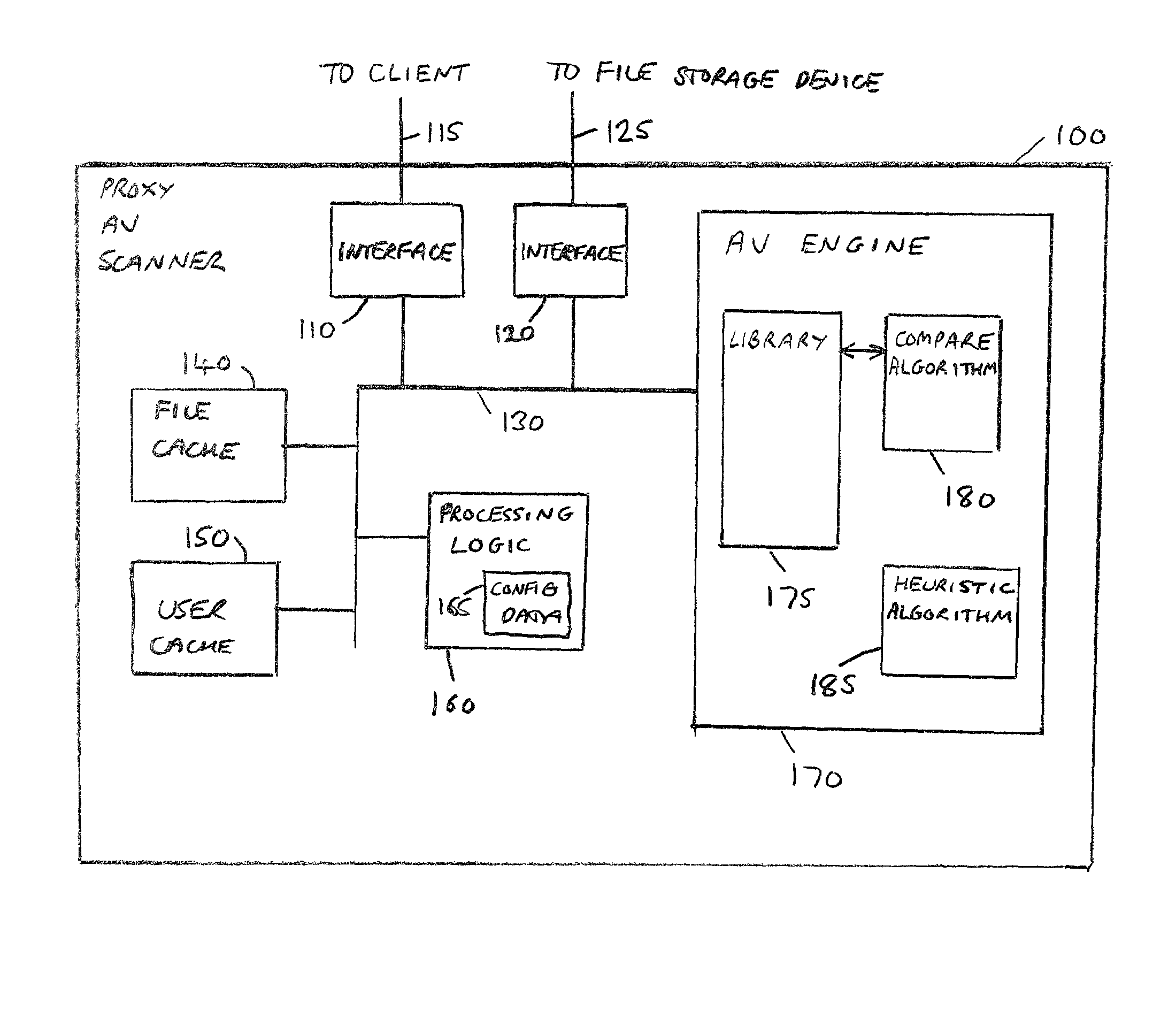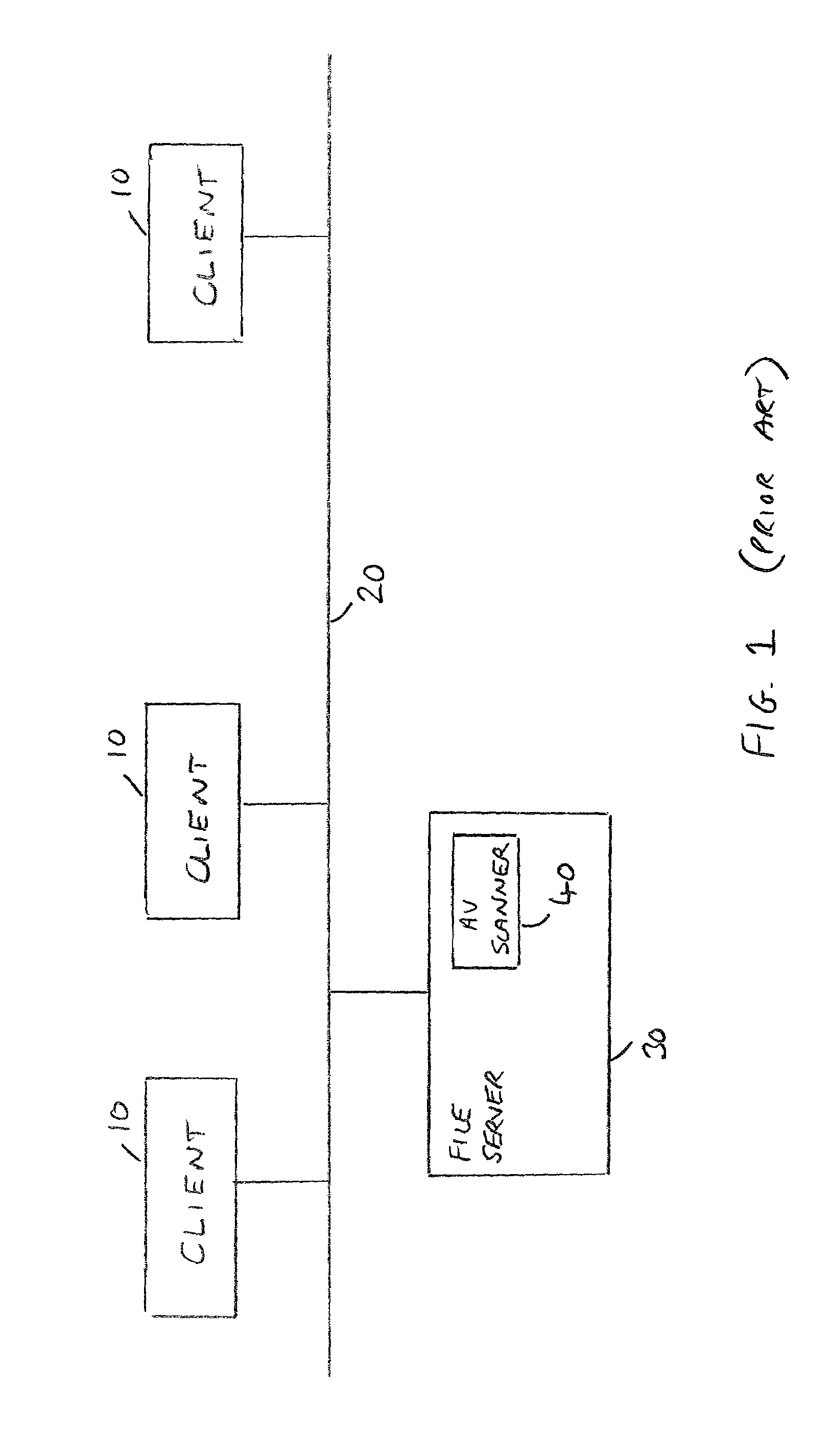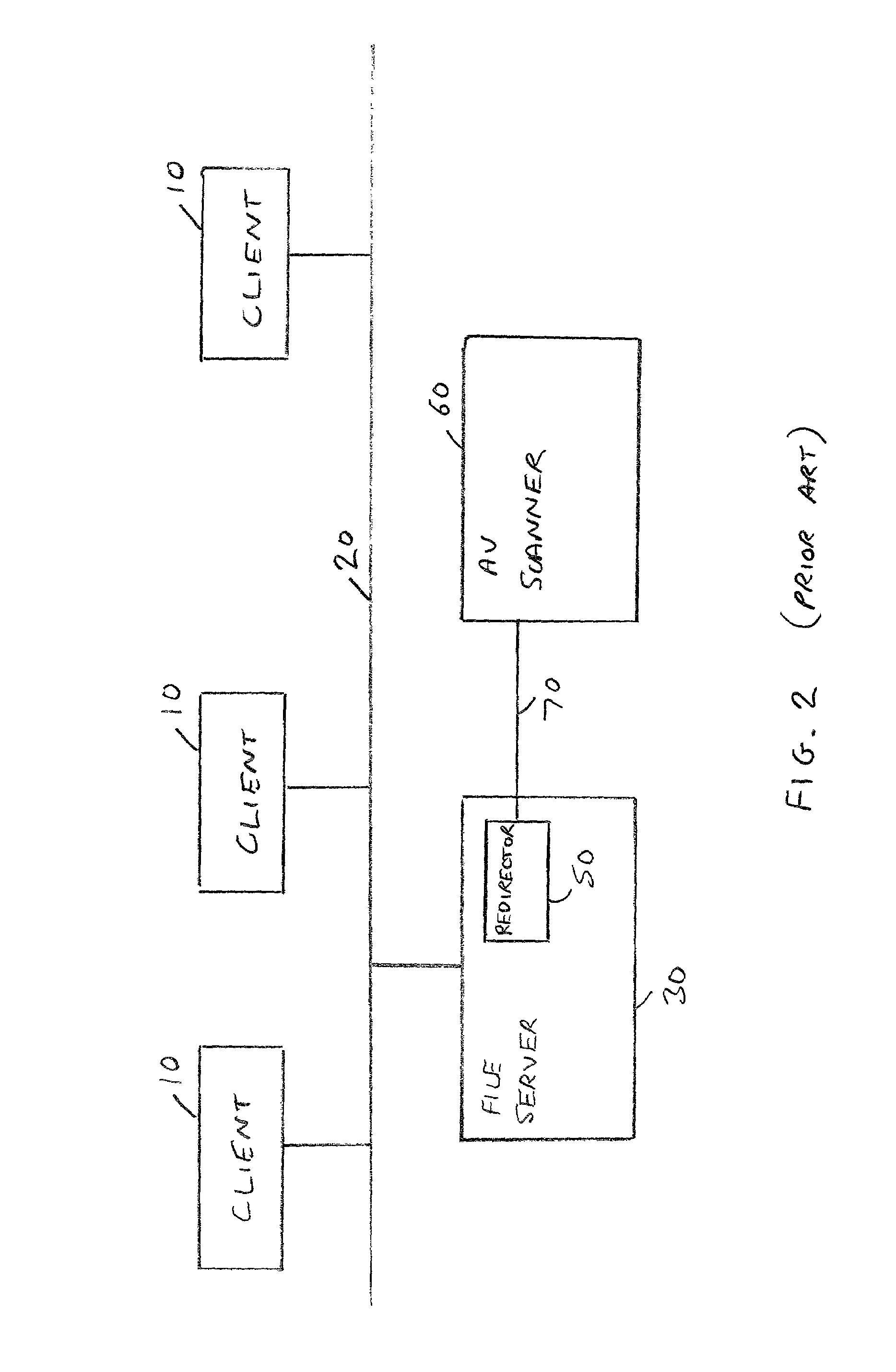Handling of malware scanning of files stored within a file storage device of a computer network
a file storage device and file technology, applied in the direction of unauthorized memory use protection, instruments, television systems, etc., can solve the problems of significant impact on the performance of the file server, the approach clearly reduces the performance impact of the scanning process on the other activities being performed by the file server, and the performance of the file access process can still be adversely affected. , to achieve the effect of improving performan
- Summary
- Abstract
- Description
- Claims
- Application Information
AI Technical Summary
Benefits of technology
Problems solved by technology
Method used
Image
Examples
Embodiment Construction
[0044]FIG. 3 is a block diagram of a computer network having a proxy anti-virus (AV) scanner according to a first embodiment of the present invention, where a proxy AV scanner of preferred embodiments is used in a “transparent” configuration. As shown in FIG. 3, the client devices 10 are connected via an appropriate communication infrastructure (20), for example a wired network, with the proxy AV scanner 100, the file storage device 110 then being connected to the proxy AV scanner 100, but not being directly connected to the communication infrastructure 20. In a typical computer network, each device will be assigned a unique identifier, for example a name, so that communications can be directed to specific devices in the network. In accordance with the FIG. 3 embodiment, the proxy AV scanner 100 of preferred embodiments is actually given the same identifier as the file storage device 110, such that when the client devices 10 issue file access requests to the file storage device 110,...
PUM
 Login to View More
Login to View More Abstract
Description
Claims
Application Information
 Login to View More
Login to View More - R&D
- Intellectual Property
- Life Sciences
- Materials
- Tech Scout
- Unparalleled Data Quality
- Higher Quality Content
- 60% Fewer Hallucinations
Browse by: Latest US Patents, China's latest patents, Technical Efficacy Thesaurus, Application Domain, Technology Topic, Popular Technical Reports.
© 2025 PatSnap. All rights reserved.Legal|Privacy policy|Modern Slavery Act Transparency Statement|Sitemap|About US| Contact US: help@patsnap.com



